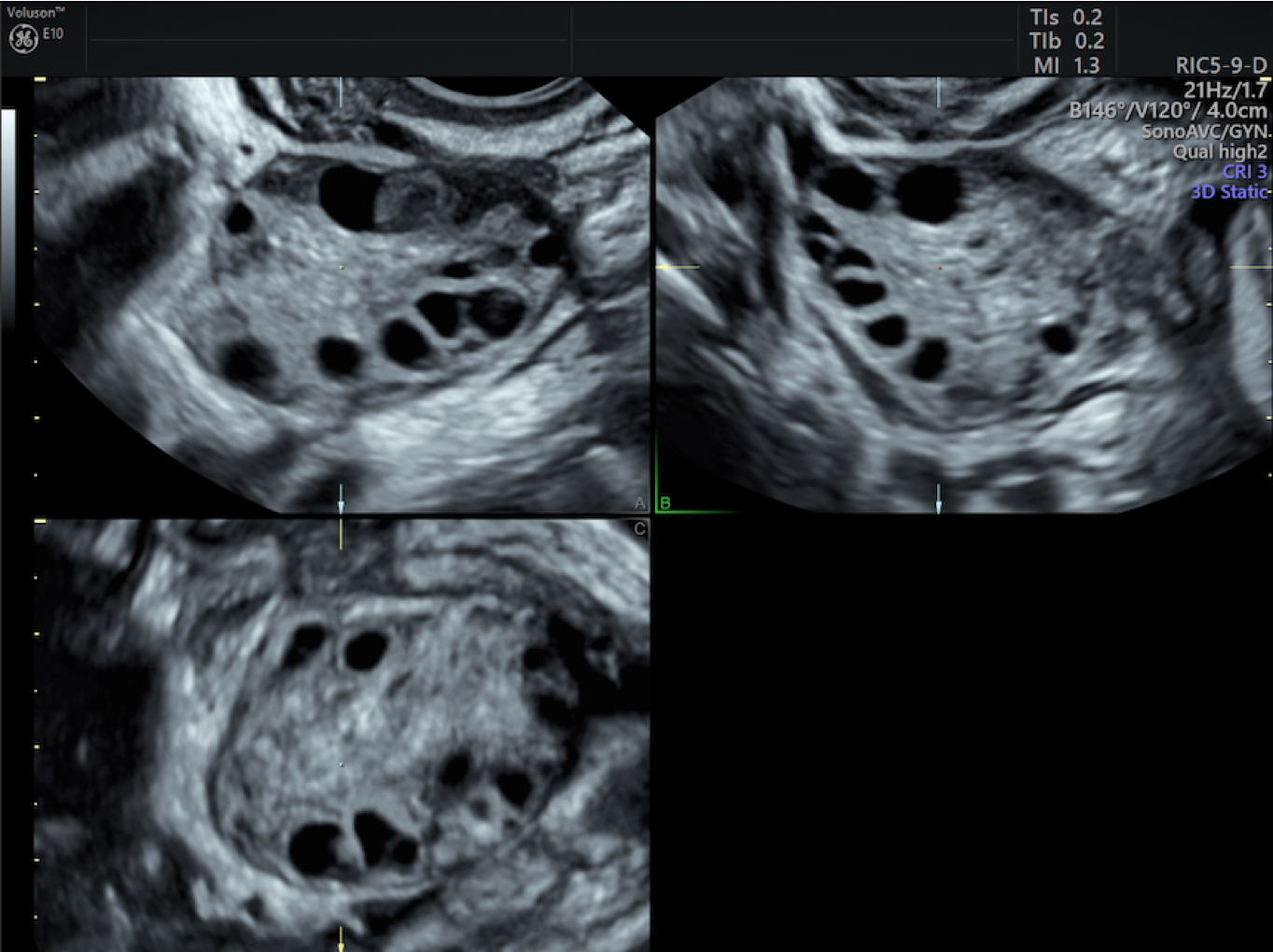Amenorrhea rarely occurs outside the confines of pregnancy, breastfeeding and menopause, but in some cases, it can be caused by other factors such as exercise or underlying gynecological conditions. Consensus guidelines from the American Society for Reproductive Medicine (ASRM) suggest that polycystic ovary syndrome (PCOS) should be considered more often as a possible cause of amenorrhea.
Exploring a PCOS diagnosis relies on delving into the tell-tale ovarian and physical signs of the condition and evaluating biomarkers, while ruling out other causes of amenorrhea. Clinicians today are using ultrasound as an effective tool for PCOS diagnosis.
Understanding PCOS
PCOS is the most common endocrine abnormality in reproductive-aged women, with a prevalence as high as 13 percent, according to research published in Human Reproduction. PCOS is characterized by a constellation of menstrual issues, including a high prevalence of oligomenorrhea and amenorrhea. The health burden of PCOS is far-reaching, including increased risk of type 2 diabetes, coronary artery disease, infertility and endometrial hyperplasia.
Although its precise etiology remains elusive, PCOS appears to occur with higher-than-normal levels of androgen hormones, which may produce acne, hirsutism and other clinical symptoms. Women with PCOS also tend to have high blood insulin levels or insulin resistance.
When amenorrhea appears in tandem with visible signs of an excess of androgens, ASRM suggests investigating PCOS as one of the more likely causes of amenorrhea.
An initial investigation may begin with estimations of follicle-stimulating hormone (FSH) and prolactin, along with thyroid-stimulating hormone to rule out subclinical hypothyroidism. Findings of low-to-normal FSH values may point to the presence of either PCOS or hypothalamic amenorrhea, reports ASRM. Given this, narrowing your diagnosis depends on clinical judgment aided by the latest guidance for evaluating the clinical and biochemical markers of PCOS.
Ultrasound and Beyond
Transvaginal ultrasound remains the gold standard for visualizing the internal structure of the ovaries, particularly in obese patients suspected of having PCOS. Imaging techniques are critical, but they should not stand as the sole basis of a PCOS diagnosis in a patient with amenorrhea. Polycystic ovaries alone are not a rare ultrasound finding; diagnosing the syndrome warrants a more robust clinical investigation.

3D ultrasound of polycystic ovary
Although diagnostic standards for PCOS remain the subject of some debate, a recent international consensus statement offers renewed guidance for clinical investigation. The evidence-based guidelines, which are a joint effort between ASRM and ESHRE advise clinicians to confirm the presence of at least two of the following markers: ultrasound evidence of polycystic ovaries, oligo-ovulation and/or anovulation and demonstrable signs of hyperandrogenism. The diagnostic steps recommend ruling out conditions as congenital adrenal hyperplasia, androgen secreting tumors and Cushing syndrome to aid in accurately confirming a PCOS diagnosis.
Next Steps With PCOS
Confirming a diagnosis allows the patient to finally begin treatment. Clinicians may wish to be mindful of both the symptoms and health risks of PCOS in crafting a treatment plan. The clinical recommendations published in Human Reproduction suggest screening patients for diabetes, cardiovascular risk factors and endometrial cancer, along with symptoms of depression and anxiety. A fasting lipid profile is advised for overweight and obese women with PCOS, regardless of age. Among women who wish to become pregnant, fertility agents such as letrozole, clomiphene citrate or metformin may offer a path to restore ovulation.
By offering the certainty of a PCOS diagnosis to women with amenorrhea, clinicians can then shift the focus to providing optimal care and peace of mind.


